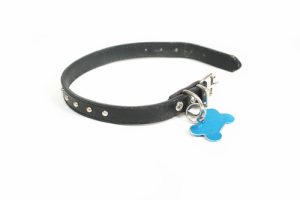 Written by Vivian Kane,
Written by Vivian Kane,
Medical care continues advancing past conventional treatments, incorporating innovative methods that address patients’ physical and emotional requirements. Introducing specially trained dogs into healthcare settings represents a notable development in comprehensive patient care. These animals connect clinical expertise with human compassion, converting clinical environments into comforting healing spaces.
The partnership between medical professionals and service animals creates valuable opportunities for thorough patient support. This collaboration exceeds traditional therapeutic approaches, establishing new benchmarks for managing complex medical conditions, emotional distress, and rehabilitation needs. Integrating these service dogs effectively demands careful assessment of procedures, training standards, and individualized applications.
Specialized Training for Medical Environment Adaptation
Medical settings present unique challenges requiring specialized canine preparation beyond standard assistance training. Animals must acclimate to medical equipment sounds, chemical odors, and unpredictable patient behaviors. Training programs should expose dogs to hospital environments during off-hours. Gradually introduce them to various medical scenarios.
Advanced training includes recognizing medical emergencies, maintaining composure during chaotic situations, and responding appropriately to different patient conditions. Ongoing education ensures animals remain current with evolving medical practices and sustain peak performance standards throughout their service careers.
Targeted Support for Psychiatric Conditions
Mental health care receives substantial improvement via thoughtfully incorporated canine support. Individuals facing anxiety, depression, PTSD, and additional psychological disorders gain from the soothing effect and particular duties these animals can perform. Service dog partners can disrupt nightmares, offer stabilization throughout panic episodes, and establish spatial boundaries in busy areas for people with agoraphobia.
Psychological assistance demands focused preparation emphasizing emotional awareness, emergency response, and treatment alerts. These dogs develop skills to identify their owner’s mental condition shifts, delivering preventive help before symptom intensification. Their companionship frequently decreases pharmaceutical reliance, enhancing general treatment adherence and healing results.
Mobility and Physical Assistance Integration
Patients with mobility challenges require comprehensive support extending beyond traditional assistive devices. Trained assistance animals provide stability during ambulation, retrieve dropped items, and assist with balance during transfers. Their support enables greater independence while reducing fall risks and injury potential.
Physical therapy sessions benefit significantly from canine integration, as animals can motivate patients through difficult exercises while providing emotional encouragement. The animals’ presence often increases patient participation rates and extends therapy session durations, improving rehabilitation outcomes and shortening recovery periods.
Seizure Detection and Response Protocols
Epilepsy treatment success significantly advances with the inclusion of trained seizure alert dogs. These remarkable partners can identify seizure warning signs as early as 45 minutes before occurrence. This allows individuals and care providers to implement necessary safety measures. Throughout seizures, these canines can activate emergency systems, place themselves to shield the person, and retrieve critical medications.
After seizures, these dogs help by guiding confused people to safe areas, providing steadiness throughout recuperation, and locating extra help if necessary. This thorough assistance significantly improves seizure patients’ daily living while reducing hospital visits and urgent medical responses.
Memory and Cognitive Assistance Programs
Individuals with memory deficits, dementia, or cognitive disorders gain substantial advantages from specially trained support animals that provide memory prompts and mental assistance. These animals offer reminders about routine activities, direct patients to specific areas within healthcare facilities, and provide stabilization during confusion or disorientation episodes.
Cognitive support training emphasizes identifying memory-related behaviors, gentle redirection during confused states, and ensuring patient safety during wandering incidents. Animals develop skills to interrupt potentially dangerous actions, such as unsupervised departures from secure areas, while delivering comfort during anxiety or agitation frequently associated with cognitive deterioration.
Diabetic Alert and Management Support
Specially trained animals can detect blood sugar changes through smell, providing significant advantages for diabetes care. These animals warn patients about dangerous low or high blood sugar levels before symptoms appear, preventing medical crises and hospital visits.
Training covers teaching animals to fetch glucose supplies, notify family members during overnight episodes, and track medication timing. Their continuous monitoring offers reassurance to patients and families while supporting more active lives and better diabetes management.
Autism Spectrum Disorder Assistance
Individuals with autism spectrum disorders experience benefits from specially trained animals. These animals provide a calming influence during sensory overload. They interrupt harmful repetitive behaviors and assist with social interaction challenges. Their presence often reduces anxiety levels while improving communication attempts and social engagement.
Training focuses on recognizing autism-specific behaviors, providing pressure therapy during meltdowns, and facilitating social interactions in medical settings. Animals can also assist with routine establishment and transition management, which are crucial elements for successful autism treatment and daily functioning.
Pain Management and Distraction Techniques
Chronic pain management benefits significantly from animal companionship. Their presence often reduces perceived pain levels and decreases reliance on pharmaceutical interventions. Animals provide a natural distraction during painful procedures while offering emotional support throughout treatment.
Training includes recognizing pain behaviors, providing appropriate comfort responses, and maintaining calm during medical interventions. Their support often enables patients to participate more fully in rehabilitation programs while maintaining better overall mood and treatment compliance.
Cardiovascular and Cardiac Alert Services
Cardiovascular patients benefit substantially from animals trained in cardiac event detection and immediate response. These specialized companions identify arrhythmias, recognize pre-cardiac event indicators, and notify medical staff about dangerous cardiovascular episodes before they become critical.
Cardiac alert animals receive specialized training to detect odor changes associated with heart conditions, blood pressure variations, and cardiac distress. Their detection capabilities provide essential early warning, enabling prompt medical intervention and preventing serious complications.
Training encompasses emergency alert system activation, safe patient positioning during cardiac events, and appropriate support during recovery. These animals also learn medication schedule recognition and assist with cardiac rehabilitation exercises, providing consistent motivation throughout treatment protocols.
Surgical Recovery and Post-Operative Support
Post-surgical recovery presents distinct challenges where service animals deliver essential patient support during difficult healing. These animals assist with mobility in early recovery, provide emotional comfort during painful rehabilitation, and help maintain critical medication schedules.
Surgical recovery animals learn to identify post-operative complications, assist with gentle movement protocols, and offer stability during initial walking attempts. Their presence reduces post-surgical anxiety and depression while encouraging more active participation in recovery programs. Their emotional support significantly influences healing rates, as stress reduction enhances immune function and accelerates tissue repair.
Surgical support training includes wound care protocol awareness, complication recognition, and assisting without disrupting medical equipment. These animals learn to work effectively around medical devices while maintaining their supportive function throughout recovery.
Long-Term Partnership Development
Successful integration requires commitment to long-term partnerships between healthcare facilities, patients, and animal handlers. These relationships develop over time, with animals becoming familiar with specific patients, medical routines, and facility protocols. Regular evaluation ensures continued effectiveness while identifying opportunities for expanded services.
Partnership development includes ongoing training updates, health monitoring for working animals, and continuous assessment of patient outcomes. Successful programs often expand to additional departments and services, creating comprehensive support networks that benefit entire patient populations.
Rehabilitation and Physical Therapy Enhancement
Recovery programs gain significant momentum through animal integration, as patients often demonstrate increased motivation and participation when working alongside canine partners. Animals can assist with specific exercises, encourage difficult sessions, and help maintain consistent therapy schedules.
Training focuses on understanding rehabilitation equipment, recognizing patient fatigue levels, and providing appropriate motivation techniques. Their support often accelerates recovery timelines while improving patient satisfaction with treatment programs.
Emergency Response and Crisis Intervention
Medical emergencies require immediate, coordinated responses that trained animals can significantly enhance. These animals can alert medical staff to patient distress, provide immediate comfort during crises, and assist with evacuation procedures when necessary. Their training includes recognizing various emergency scenarios and responding appropriately to each situation.
Crisis intervention training prepares animals for chaotic environments while maintaining focus on their primary responsibilities. They learn to differentiate between routine medical activities and genuine emergencies, ensuring appropriate response levels for each situation.
Pediatric Care Enhancement
Children with medical conditions demonstrate remarkably positive responses to animal-assisted interventions. When supported by trained animal companions, Young patients experience reduced anxiety about medical procedures. These animals provide distraction during uncomfortable treatments, promote cooperation with healthcare providers, and offer comfort during prolonged hospitalizations.
Pediatric implementation requires specialized training addressing child-specific requirements, safety measures, and developmental factors. Animals must exhibit exceptional patience, gentleness, adaptability to fluctuating energy levels, and unpredictable behaviors characteristic of pediatric settings.
End-of-Life and Hospice Care Support
Patients with terminal conditions and their families receive significant comfort from trained support animals during challenging end-of-life periods. These animals offer unconditional emotional support, alleviate feelings of isolation, and provide solace during life’s final stages. Their presence often facilitates meaningful family discussions and assists with grief processing.
Hospice implementation requires nuanced training covering death awareness, family support approaches, and maintaining proper boundaries during emotionally charged situations. Animals develop skills to provide comfort without disrupting medical care while supporting both patients and grieving family members.
Establishing Clear Integration Protocols
Successful integration begins with comprehensive protocols. It outlines responsibilities, boundaries, and expectations for all team members. Healthcare facilities must develop guidelines addressing hygiene standards, patient interaction procedures, and emergency protocols. These protocols should specify which departments can accommodate canine partners, identify appropriate patient populations, and establish clear communication channels between handlers, medical staff, and administration.
Training programs for healthcare workers must address proper interaction techniques, recognition of canine stress signals, and understanding of legal requirements surrounding assistance animals. Regular protocol reviews ensure adaptation to changing regulations and emerging best practices, while documentation systems track outcomes and identify areas for improvement.
Endnote
Incorporating trained support animals into medical teams constitutes an innovative approach to patient care that simultaneously addresses clinical and psychological needs. These exceptional partnerships establish therapeutic environments that surpass conventional medical treatments, delivering hope, comfort, and functional assistance to patients confronting diverse challenges. As healthcare progresses toward more comprehensive approaches, these canine team members become increasingly essential in creating thorough, empathetic care experiences that effectively support complete patient wellness.
Author Bio
Vivian Kane is a health writer with a passion for improving care for the elderly. With over a decade of experience in healthcare policy and senior care, she focuses on educating the public about innovative trends and best practices in eldercare. Vivian has contributed to various healthcare journals and blogs. Her work aims to bridge the gap between healthcare professionals and caregivers, ensuring that the latest trends in eldercare education are accessible to everyone. When she’s not writing, Vivian volunteers at local senior care centers and advocates for better care standards for aging populations.
Please also review AIHCP’s Pet Loss Grief Support Certification programs and see if it meets your academic and professional goals. These programs are online and independent study and open to qualified professionals seeking a four year certification



















